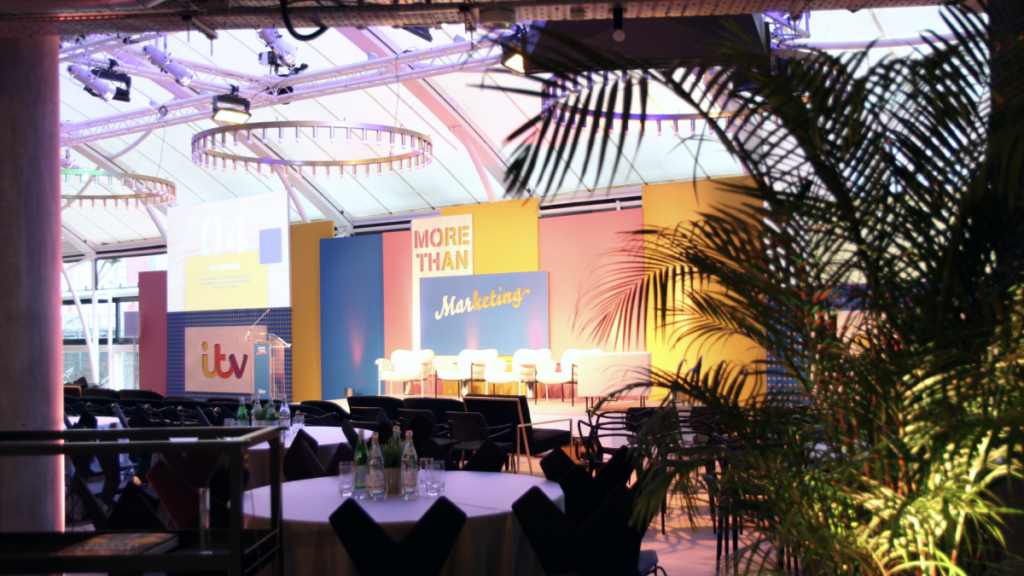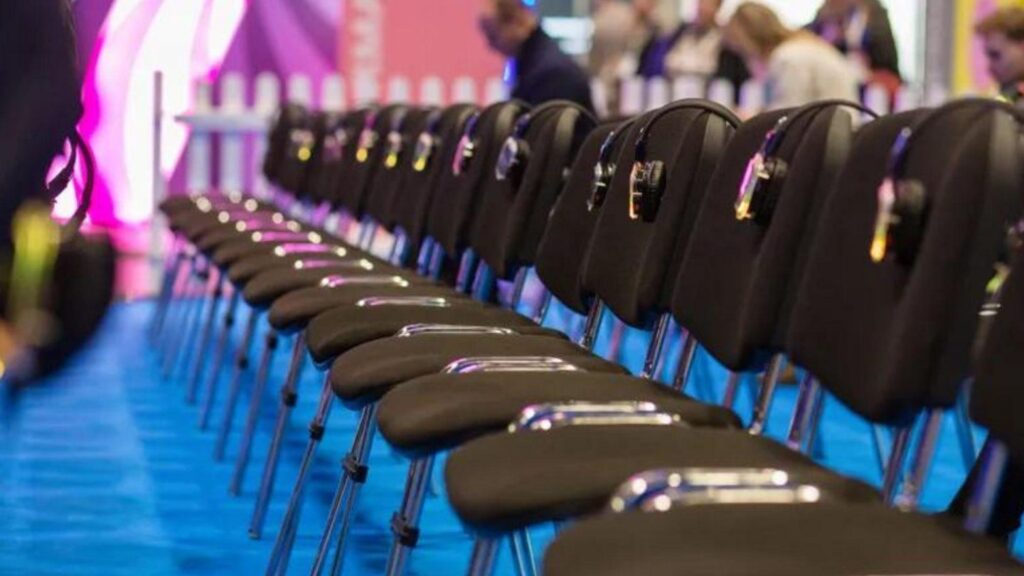What’s next and what matters: The Trends Shaping Corporate Events in 2026
How Event Design Can Boost Attendee Wellbeing

A healthy event environment is a space designed with the attendee in mind. It can help attendees feel relaxed, and focused on the event’s purpose and content in a comfortable environment.
With the wellness revolution guiding trends in many industries, the days of staring at an LED screen in dark conference rooms are gone. Guests don’t want screen time or information overload, they want connections, insights and experiences.
There’s plenty of research into why offices and work spaces, even our home workstations, should be designed ergonomically and around the worker’s wellbeing to improve productivity. This has especially been boosted following the switch over to a hybrid model, where workers have essentially become ‘visitors’ to their own workplaces and, as a result, have started to observe all aspects of the office environment and how these factors might make them feel. Uncomfortable, stressed, tired?
Although, at business events, attendees are learning and engaging with content and colleagues, are we thinking about how to facilitate the best level of attendee engagement from this perspective? To ensure a visitor wants to attend, stay or come back to your event, you need to build an environment where visitors can thrive. Where they feel connected, excited, relaxed, or productive.
Now more than ever, the research into the science behind design can inform our choices to improve people’s experience of built environments; events. Designing your event is an opportunity to create a happy and healthy space through venue choice, event design, and use of the space.
Venue choice
If an event can be healthy then so can a building, proven by the WELL standard which is a library of over 500 evidence-based, design, policy and operational strategies that, when implemented, can improve the health and well-being of people. To be certified, you are committing to making the air better to breathe, selecting healthier materials, and encouraging daily movement. The Spine in Liverpool for example is one of the healthiest buildings in the UK, incorporating all ten WELL Building Standard Concepts to create an environment that has a positive impact on wellbeing. Subtle design features include the use of repeating patterns in nature which have a naturally calming effect on the mind. Echoing a tree rising through the building, an earthier colour palette on the lower floors merges into greener, leafier colours and patterns and blue tones on the upper floors.
For events, it’s important to choose a venue with courtyards and light-filled atriums that draw natural air in, as well as plenty of open space to design attendee-focused zones which we come to further on in this blog.
Biophilic Design
Biophilia describes the relationship between humans and nature, and concerns the need we have to be connected to nature. Plenty of research confirms this human preference for the natural, rather than the built, environment. It means integrating natural elements such as plants, natural light, and organic materials into the design of an event to reflect this connection and boost mood. This can be done through:
1. Placing plants around the event or installing green walls that also filter the air.
2. Natural materials such as stone, wood, and cork in your furniture choices and design.
3. Natural light and views of nature are largely down to your venue choice, but you can also organise the layout of the event according to make the most of natural settings, organise outdoor activities, and even change the tone of lighting and LED walls to be gentler on the eyes, mimic natural lighting patterns, or create a relaxing mood.
4. A nature-inspired colour palette such as earthy tones can also create a calming mood.
Mapping out the attendee experience
Creating a happier, healthier experience for attendees requires you to think about what things would benefit them outside of the main presentations and plenary. Consider creating zones throughout the event that serve specific purposes.
It’s one thing having the space to sit, talk to others, catch up on emails, and enjoy some refreshments at a busy exhibition. You would think there would be some seating to do this at most events, but we find industry events don’t always meet this key attendee need. You can take this further by having dedicated wellness spaces that give people a place to recharge. Especially for lager and busier events, designated quiet zones can help attendees take a break from the crowds and prevent them becoming overwhelmed or stressed.
Nutrition and hydration stations are also key to provide attendees with access throughout the event to healthy food and beverages, helping to maintain their energy and focus.
Attendees also look for social connections at events, so you should also consider zoning out networking lounges, creating interactive activities in the agenda, and providing the option to set up meetings in these spaces with fellow attendees via your event app, fostering connections.
You can even dictate the moods of specific zones using colour. Blue can stimulate productivity in content sessions, while green can create a calming space and bring down eye fatigue in breakout and wellness spaces. Keeping agendas flexible and building in enough breaks between sessions allows for attendees to explore these spaces as they need to fully enjoy the experience you have designed.
Attendee comfort
We all want attendees to feel comfortable at our events. When you’re in an uncomfortable chair, or it’s too hot, it’s pretty much all you can think about limiting the focus you can give to the event’s content. Comfortable seating also means that the attendee has enough space around them, has somewhere to place their drink or notebook, and can see the screen or speaker comfortably without having to strain their neck.
Another way to prevent discomfort is ensuring there is controlled ventilation and temperatures at the venue to avoid a stuffy atmosphere, and while it’s all up in the air, consider using subtle aromatherapy at the event using scents like rosemary and peppermint that aid in mental wellbeing.
Wellness is a holistic approach that allows organisers to leave attendees feeling good and demonstrate a positive message about their values.
Once you have designed a healthy event environment, consider building it into your agenda too with our blog How To Prioritise Attendee Wellness At Corporate Events.
Related insights

The Must-Attend Industry Events for Event Planners in 2026

